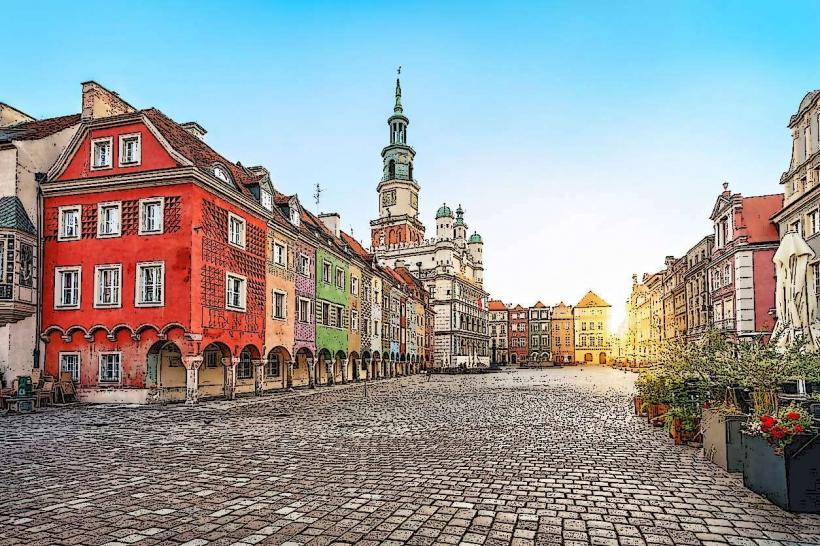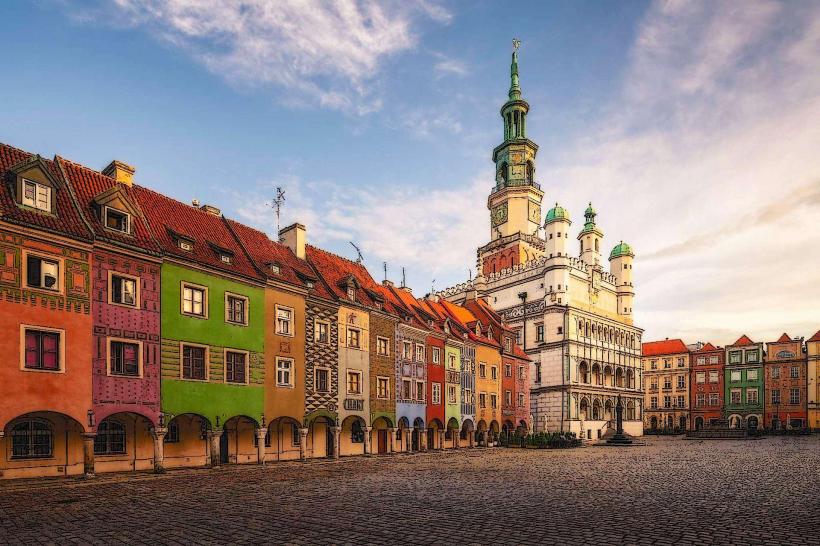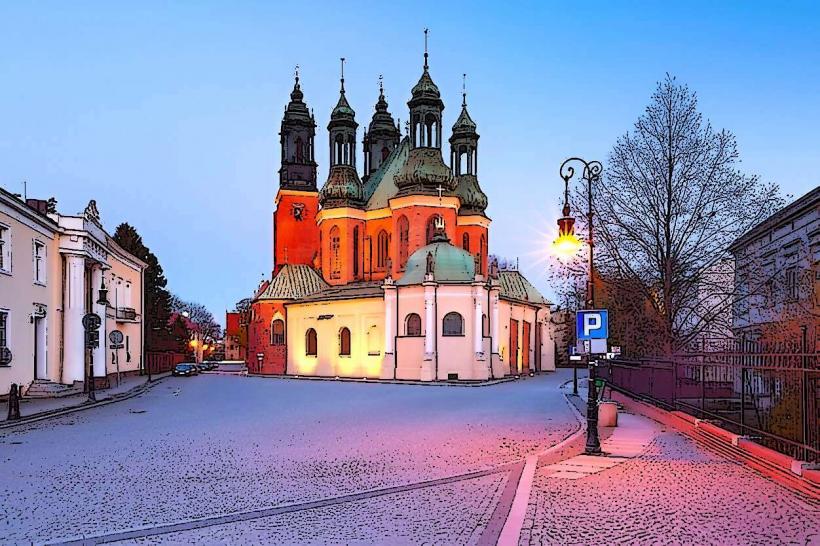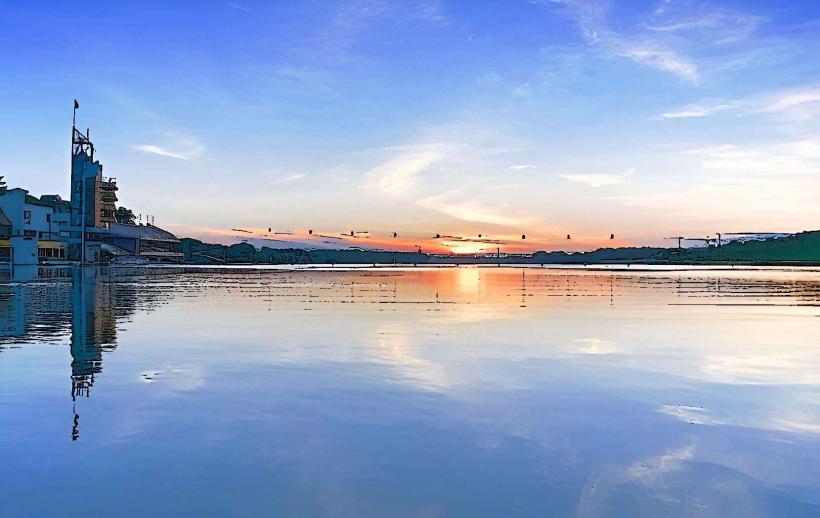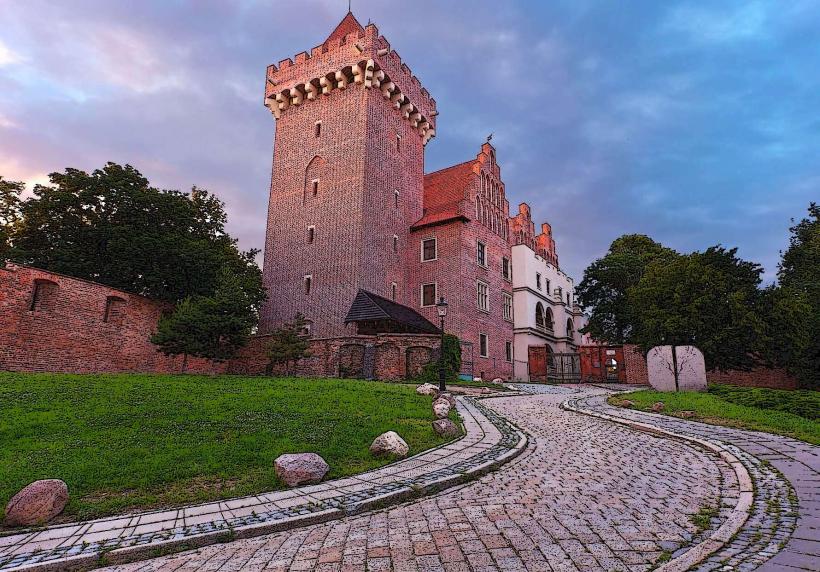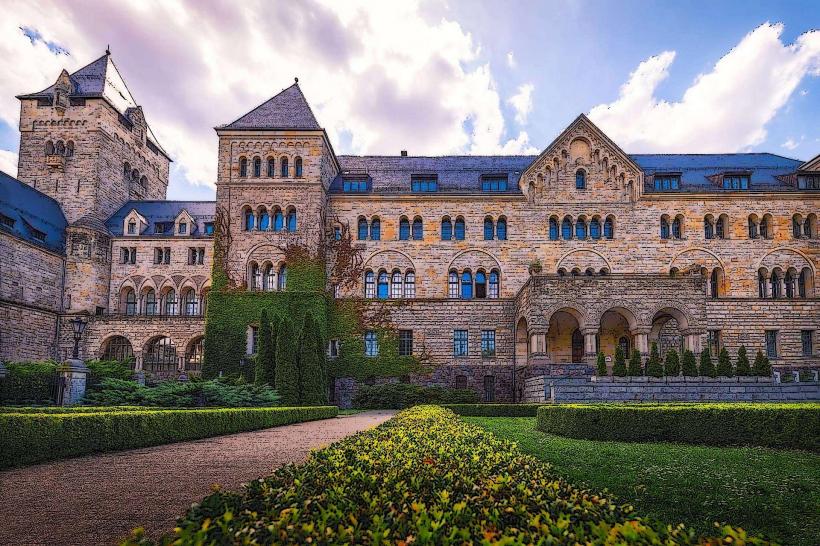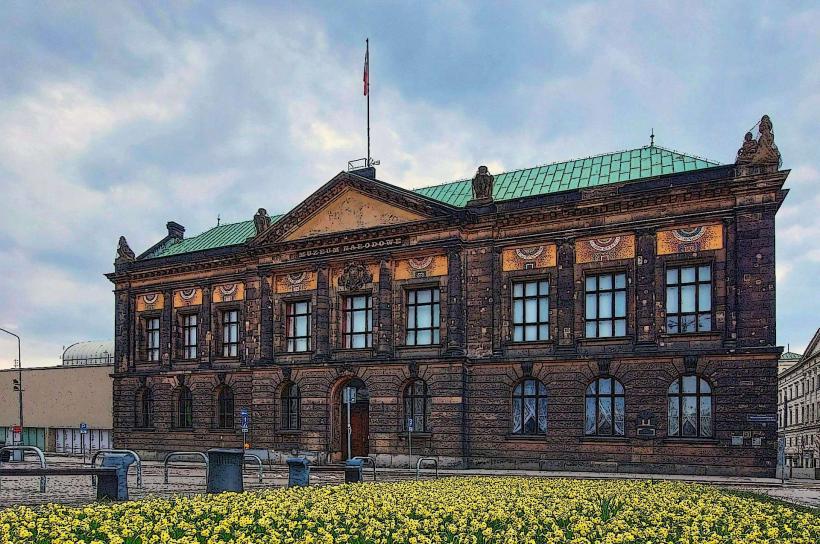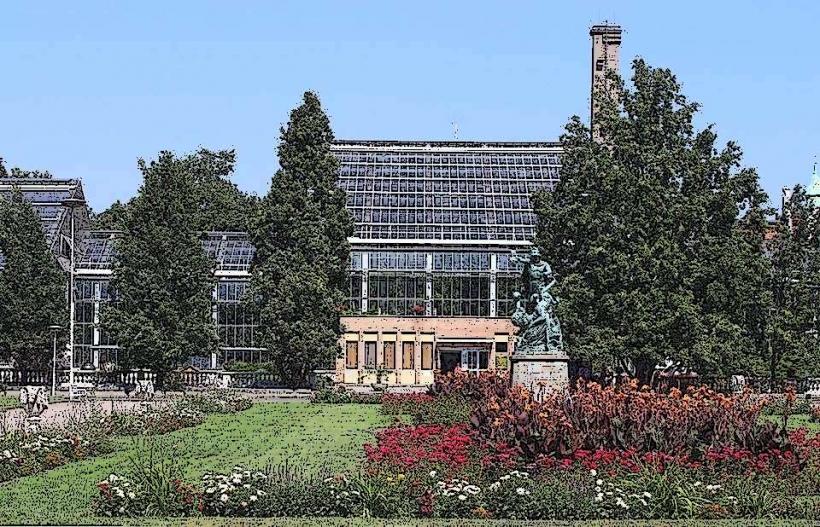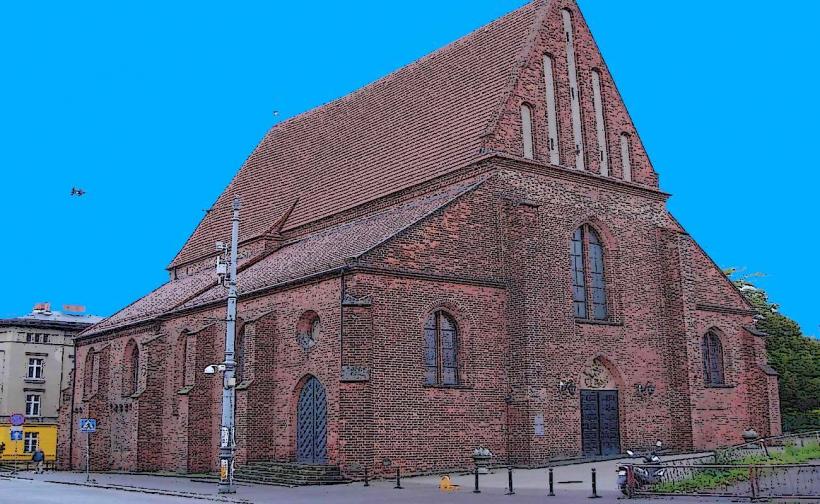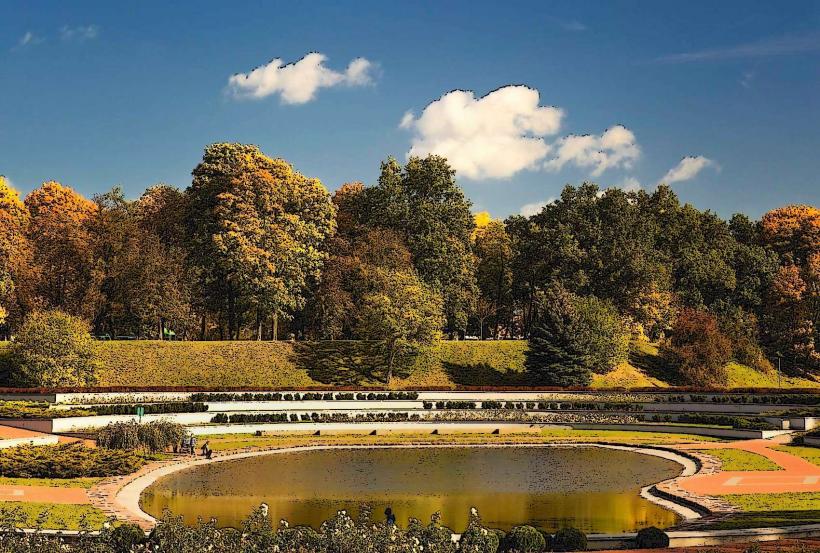Information
City: PoznanCountry: Poland
Continent: Europe
Poznań is one of Poland’s oldest and most historically significant cities, located in the west-central part of the country. It is the capital of the Greater Poland Voivodeship and plays a key role in Poland’s economy, culture, and education. As a historical and modern city, Poznań combines medieval architecture with a dynamic, vibrant atmosphere, making it one of Poland’s most appealing cities for both tourists and residents.
History
Poznań’s history dates back over a thousand years and is deeply intertwined with the early history of Poland. The city was the site of the first historical Polish rulers, and it played a central role in the formation of the Polish state. It was the capital of the early Piast dynasty, which ruled Poland in the 10th and 11th centuries. The first Polish king, Mieszko I, is said to have been baptized in Poznań around 966, an event that marked the beginning of Poland's Christianization.
Over the centuries, Poznań has been under various rulers, including the Kingdom of Poland, the Grand Duchy of Lithuania, the Kingdom of Prussia, and the German Empire. It was part of Germany until the end of World War I, when it returned to Poland after the country regained independence in 1918. The city experienced heavy fighting during World War II, suffering significant destruction, but after the war, it was rebuilt and became part of the People's Republic of Poland.
Poznań has been a center of Polish culture, trade, and industry for centuries. In the 20th century, it became an important industrial hub, and it remains one of Poland's economic powerhouses today.
Geography and Layout
Poznań is located on the Warta River, in the western part of Poland, and is well connected to the rest of the country. The city is divided into several districts, with the Old Town (Stare Miasto) being the historic heart of the city. The Old Town is home to beautiful squares, colorful buildings, and iconic landmarks such as the Poznań Town Hall and the Cathedral of St. Peter and St. Paul.
Poznań also has a significant industrial district, as well as residential neighborhoods that range from historic homes to modern developments. The city’s parks, lakes, and the Warta River create a pleasant environment, with plenty of green spaces for outdoor activities. Poznań is known for its beautiful architecture, which blends Gothic, Renaissance, and Baroque styles with modern and contemporary designs.
Economy
Poznań is one of Poland’s economic hubs, known for its diverse economy that includes manufacturing, services, trade, and high-tech industries. It has one of the highest GDPs per capita in Poland and is considered one of the richest cities in the country.
The city has a strong industrial base, particularly in sectors like automotive manufacturing, food processing, and machinery production. Poznań is also a significant center for trade fairs and exhibitions, with events like the Poznań International Fair attracting businesses and visitors from around the world.
In recent years, Poznań has become a growing center for the technology sector, with a number of IT and tech companies setting up operations in the city. The city’s highly educated workforce, supported by its universities and research institutions, makes it an attractive location for businesses in the innovation and technology sectors.
Education and Research
Poznań is a major academic center in Poland, home to several prestigious universities and research institutions. The University of Poznań, founded in 1919, is one of the largest and most respected universities in the country. It offers a wide range of programs across various disciplines, including science, engineering, humanities, and business.
Other key institutions include the Poznań University of Technology, which specializes in engineering and applied sciences, and the Adam Mickiewicz University, which is known for its research in humanities and social sciences. Poznań also has a thriving research community, with numerous research centers and institutions focusing on fields such as biotechnology, environmental studies, and engineering.
The city’s universities attract a large number of students, both from Poland and abroad, contributing to Poznań’s youthful and dynamic atmosphere.
Culture
Poznań has a rich cultural heritage and is known for its vibrant arts and cultural scene. The city is home to a wide range of theaters, galleries, music venues, and museums that showcase its historical significance as well as its contemporary artistic achievements.
Poznań hosts numerous festivals throughout the year, celebrating various aspects of Polish and international culture. The Malta Festival, one of the most famous events, is a multidisciplinary arts festival that draws large audiences each summer. Other notable events include the Poznań International Film Festival and the Poznań Jazz Fair.
The city is also known for its classical music scene, with the Poznań Philharmonic and the Poznań Opera House being two of the city’s most important cultural institutions. The city’s historic architecture and public squares provide an excellent backdrop for concerts, performances, and other cultural events.
Public Transport and Infrastructure
Poznań has a well-developed public transport network, including buses and trams that connect different districts of the city. The city is also investing in modernizing its infrastructure, with plans to expand its public transport system, improve road networks, and promote sustainable transport solutions.
The city is well connected to the rest of Poland and Europe. Poznań has an international airport, Poznań Ławica Airport, which offers flights to major European cities. The city is also an important railway hub, with fast trains connecting it to other cities in Poland, such as Warsaw and Wrocław, as well as to neighboring countries.
Poznań's infrastructure is constantly being updated, with a focus on improving public transport and making the city more pedestrian- and bicycle-friendly. The city is also expanding its modern office buildings and residential areas to accommodate its growing population.
Green Spaces
Poznań is known for its green spaces and parks, which make it an attractive city for outdoor activities. The city is home to several large parks, including the Cytadela Park, which is one of the largest and most popular parks in Poznań. It features beautiful walking paths, gardens, monuments, and the Poznań Military Museum.
The Malta Lake area, located near the city center, is another key recreational space, offering opportunities for boating, cycling, and picnicking. The area around the Warta River is also home to numerous walking paths, parks, and gardens, making it a popular spot for residents and tourists alike.
Poznań’s commitment to green urban planning is evident in its numerous green spaces and the city’s ongoing efforts to improve the environmental quality of life for its residents.
Modern Development and Urbanism
Poznań has undergone significant development over the past few decades, with numerous new residential, commercial, and cultural projects. The city’s Old Town has been carefully preserved, but modern architecture has been introduced in various areas, contributing to the city’s evolving urban landscape.
Poznań is also focusing on sustainable urban development, with projects aimed at improving energy efficiency, reducing pollution, and enhancing public transportation. The city has invested in creating pedestrian-friendly areas, expanding bicycle lanes, and promoting the use of electric vehicles.
Social Life and Lifestyle
Poznań offers a high quality of life, with a mix of historical charm and modern amenities. The city has a thriving café and restaurant scene, with numerous eateries offering both Polish and international cuisine. Poznań is known for its vibrant nightlife, with a wide range of bars, clubs, and music venues catering to different tastes.
The city’s relaxed atmosphere, combined with its cultural richness, makes it an attractive place to live and visit. Poznań has a relatively low cost of living compared to other major Polish cities like Warsaw and Kraków, making it an appealing destination for students, young professionals, and families.
Challenges
Like many growing cities, Poznań faces challenges related to urbanization, including traffic congestion, housing shortages, and maintaining the balance between modern development and historical preservation. However, the city is actively working to address these challenges through sustainable urban planning and investments in public transport and infrastructure.
Future Outlook
Poznań is set to continue its development as one of Poland’s key cities. Its strong economy, rich cultural scene, and commitment to innovation make it an attractive destination for both businesses and individuals. With ongoing investment in infrastructure and sustainable urban development, Poznań is poised to become an even more important cultural and economic hub in the coming years. The city’s growing reputation as a center for education, business, and tourism ensures its continued success as a modern, vibrant European city.

